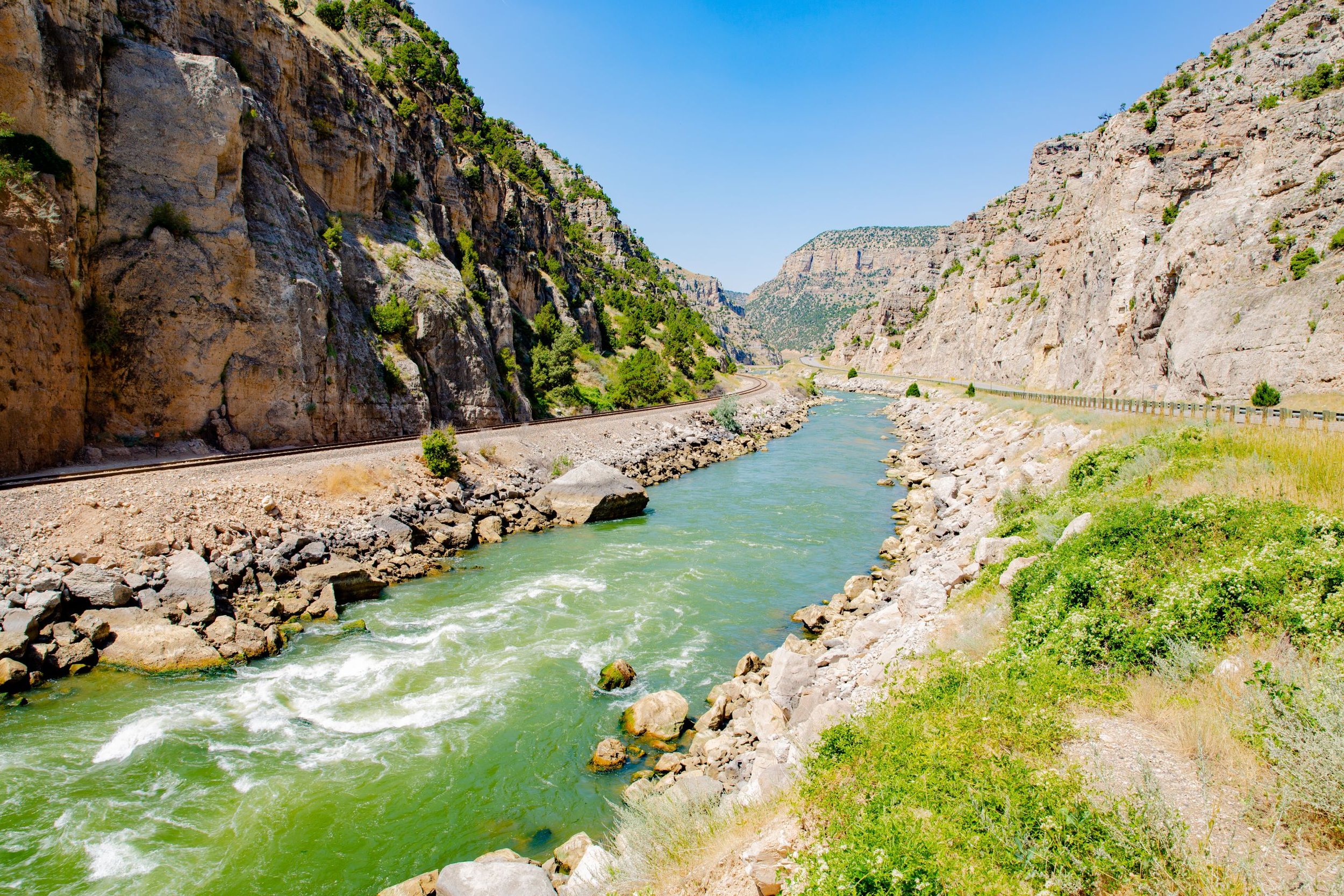Reflections on the virtual Wind River Inter-Tribal Gathering
When it comes to understanding the complex relationships between people and the rest of nature, we have a lot to learn from listening to Indigenous voices. That reality was highlighted on March 1, 2022, as the Greater Yellowstone Coalition partnered with the Eastern Shoshone Tribe, Northern Arapaho Tribe, and the National Park Service, to co-host a virtual Inter-Tribal Gathering to commemorate the 150th Anniversary of Yellowstone National Park.
On March 1, 1872, President Ulysses S. Grant signed into law an act to create Yellowstone as America’s first national park. Since then, it has become a model and inspiration for conservation across the world. In coming together to commemorate Yellowstone National Park’s 150th Anniversary, our intent was not only to pay respect to the significance of Yellowstone as the flagship of landscape conservation, but also to elevate Indigenous people’s connection to this treasured landscape that have existed for millennia.
An important first step in achieving this goal requires us all to acknowledge that there is a dark history for Native Nations that includes genocide, assimilation, suppression of cultural traditions, forced removal from homelands that are now America’s public lands, and a century-long denial or avoidance of accurately portraying the Indigenous connection to places like Yellowstone.
Stepping out of the shadows of this dark history, present investment in bridging partnerships between Tribes, federal agencies, and the NGO community generates a brighter future. With leadership from Tribal governments, Yellowstone National Park, the Department of Interior, the Environmental Protection Agency, and conservation organizations, we are collectively entering new territory for better integrating Indigenous conservation and cultural practices into the stewardship of public lands.
The virtual Wind River Inter-Tribal Gathering brought into focus a couple of topics. First, there is a renewed commitment from the federal government to improve Tribal consultation and coordination. In some places that investment embarks on the discussion of co-management. Second, Indigenous cultural paradigms treat plants, animals, and landscapes as relatives, medicine, healers, teachers, and cross-generational purveyors of culture and tradition that is essential to the strength of a Native Nation.
The Big Wind River meanders through the Wind River Reservation, providing one of life’s most important natural resources. Water is life, and we want to ensure the Big Wind River continues to provide its blessings to plant, human, and wildlife communities.
This comes to life in ways that connect the ability of Tribal governments to assert sovereignty and actualize treaty rights while simultaneously supporting Tribal members’ mental health, sustenance, and spiritual practices. Admittedly, American mainstream society has a lot to learn from Indigenous world views about the interconnection of these components of life that ultimately link us back to revered landscapes like Yellowstone National Park.
It’s clear that public engagement on these topics is strong. Over 600 people registered for the online gathering that included remarks from Eastern Shoshone Chairman John St. Clair, Northern Arapaho Chairman Jordan Dresser, Yellowstone National Park Superintendent Cam Sholly, GYC’s Executive Director Scott Christensen. Panelists presentations included Dorothy Firecloud who is the Native American Affairs Liaison to the National Park Service Director; John Murray, the Tribal Historic Preservation Officer from Blackfeet Nation; Kimberly Varilek, the Environmental Protection Agency’s Region VIII Chief of Tribal Affairs Manager; Crystal C’Bearing, the deputy director from the Northern Arapaho Tribal Historic Preservation Office; Louise Dixey, Shoshone Bannock’s Cultural Resources Director; Faith Spotted Eagle, a Yankton Sioux Chairwoman of their Treaty Coordinating Committee; Valerie Grussing from National Tribal Historic Preservation Office; and GYC’s Senior Wind River Conservation Associate, Wes Martel.
Through GYC’s participation in the Yellowstone National Park Bison Conservation and Transfer Program, we aim to ensure genetically pure Yellowstone bison are re-homed to Tribal lands across North America. For Indigenous communities, buffalo is power. We are committed to ensuring that power is restored and honored now and forever.
The virtual Inter-Tribal Gathering included nearly three hours of speaker and panel presentations, complimented by prayers from Native elders and the primordial drumming of the Northern Arapaho Eagle Drum. For many who participated, the event spurred hope and excitement for the future. Support is growing for integrating and strengthening Indigenous culture and conservation interests into the management of federal public lands. As we move forward, leadership and wisdom must come from the Tribes. Now, more than ever, is a time for listening. Fortunately, these conversations with Tribal, federal, and NGO partners will continue in more detail at the in-person Inter-Tribal Gathering scheduled for June 1-3, 2022, on the Wind River Reservation. We look forward to sharing more in the days and months ahead.
—Charles Drimal, Deputy Director of Conservation
The Greater Yellowstone Ecosystem is the land of 49+ Indigenous Tribes who maintain current and ancestral connections to the lands, waters, wildlife, plants, and more.




